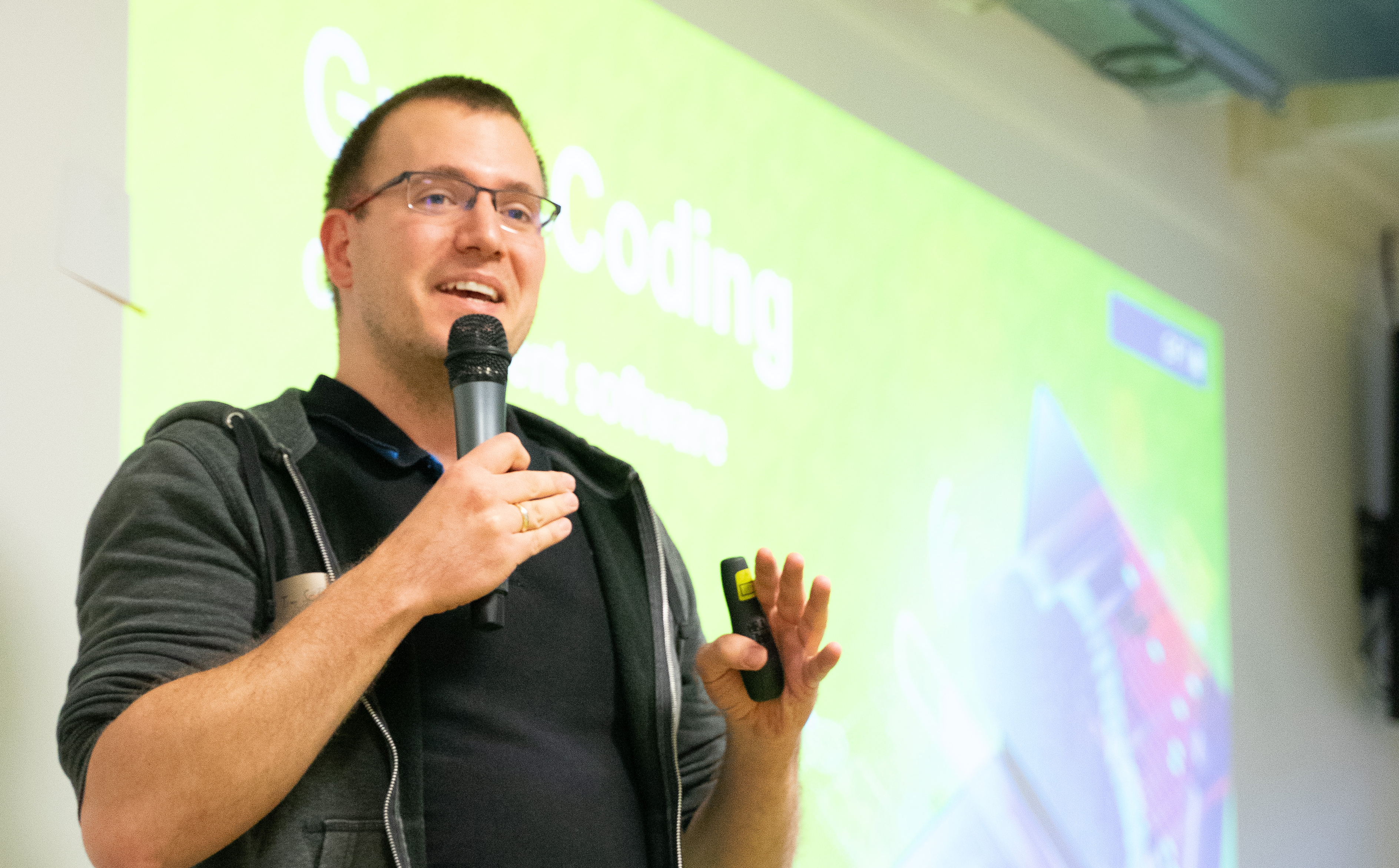Release Date
April 22, 2024
Author
Alise Munson

April 22, 2024
Alise Munson


Tim Schade, during his talk at the Green Transformation Incubator last fall, introduced the concept of green coding—a vital initiative for reducing emissions in software development. This Earth Day, let’s delve into Tim’s insights and explore how tech startups and developers can contribute to a greener planet.
>> Listen to the original recording of this keynote talk on SoundCloud.
Green coding is about optimizing software development processes to reduce carbon emissions and improve energy efficiency. Tim, a seasoned software developer and architect at GFT, emphasizes that green coding is not merely a technical discipline but a necessary shift toward sustainability in the tech industry.
Tim points out that the digital sector contributes approximately 4% of global carbon emissions, with significant emissions coming from the operation of data centers, network infrastructures, and end-user devices. By comparison, the aviation industry accounts for only 2%. This statistic alone underscores the importance of implementing sustainable practices in IT and software development.
Tim discusses several approaches that can significantly lower the carbon footprint of software development:
1. Carbon Awareness: Understanding the carbon intensity of energy sources is crucial. Tim suggests that developers can optimize software processes based on when and where they deploy their applications, taking advantage of lower-carbon intensity energy during certain times of the day or in specific regions.
2. Efficiency in Code and Architecture: By optimizing code and architecture, developers can reduce the amount of data processed and stored, minimizing energy usage. Techniques such as effective data storage formats, caching, and the elimination of unnecessary data storage can lead to substantial energy savings.
3. Hardware and Infrastructure Optimization: Tim encourages the use of energy-efficient servers and cloud services that reduce the environmental impact. For instance, choosing service providers that utilize renewable energy and optimizing data transfer and storage practices are practical steps that significantly cut down emissions.
Tim passionately argues that developers play a crucial role in green coding. By being mindful of their coding practices and the choices they make in terms of compression, data management, and server utilization, developers can lead the charge in reducing IT's carbon footprint. Companies, on the other hand, need to support these initiatives by integrating sustainability into their business models and operational frameworks. Tim suggests that enterprises should adopt CO2 budgeting and set clear goals for emission reductions, mirroring strategies used in other areas of environmental management.
The journey towards green coding is not just about making incremental changes; it involves a fundamental transformation in how software is developed and deployed. As we celebrate Earth Day, let’s commit to these sustainable practices not as a one-time initiative but as a continual commitment towards our planet’s health. By embracing green coding, tech startups and developers can play a pivotal role in mitigating the environmental impact of our increasingly digital world.
Happy Earth Day!
For more on Tim Schade’s professional background in green coding, visit his LinkedIn profile.
Explore the principles of Sustainable Software Engineering through this detailed resource by Microsoft.
Learn about collaborative efforts to standardize green coding practices at the Green Software Foundation.